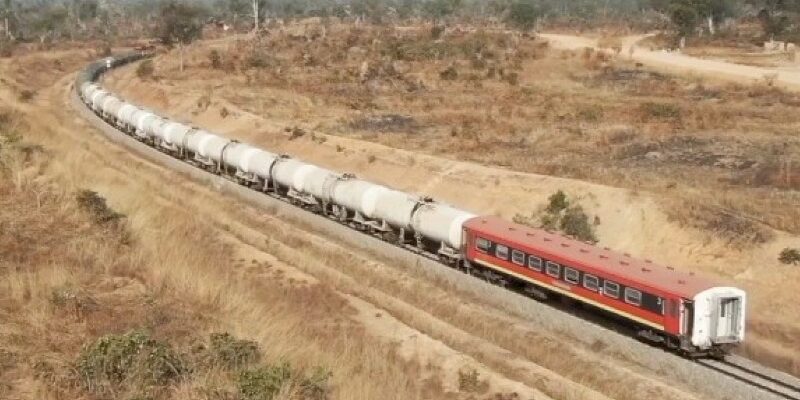The operationalization of the Lobito Corridor, and the integration of the Benguela Railway (CFB) with the Luanda Railway (CFL) and Namibe Railway (CFN) via branch lines, represents a cornerstone of Angola’s National Development Plan (PDN). This plan aims to diversify the country’s revenue sources and improve citizens’ quality of life.
This perspective was shared by economists, businesspeople, and academics interviewed by Jornal de Angola, six months after the consortium of Transfigura, Mota Engil, and Lobito Atlântico Railways took over operations for a 30-year concession period.
With 66 stations along a 1,344-kilometer railway line from Porto do Lobito in Benguela to Luau in Moxico, the importance of this infrastructure is clear.
The railway connects the Atlantic coast to the Indian Ocean, passing through significant production centers in the provinces of Huambo and Bié.
Economist Marlino Sambongue believes the Lobito Corridor will bolster Angola’s economy and spur development across Southern Africa, benefiting landlocked countries with significant mineral reserves, such as Zambia (copper) and the Democratic Republic of Congo (lithium, cobalt, and nickel).
“The impact of the Lobito Corridor can be analyzed in terms of trade facilitation, regional development, and economic diversification.
It could become a vital transport route, connecting Angola’s economy with neighboring economies, facilitating cross-border trade, increasing exports, and reducing logistics costs,” Sambongue said.
The World Bank has provided $300 million to Angola to enhance border capabilities and support the micro-economy.
This was announced in Luena, Moxico, by Bráulio Fernandes, secretary of the Border Coordinates Management Committee, following a meeting with Victor da Silva, the province’s vice-governor for the Political, Economic, and Social Sector.
Fernandes stated that the trip to Moxico, in partnership with the World Bank, aims to strengthen border operations.
The strategic Luau border is a priority, with plans to acquire equipment and resources to improve border authority efficiency, facilitate trade, and combat illicit activities.
The project also supports microeconomic operators by creating mechanisms for accessing benefits and conditions necessary for sustainable economic activities, thus meeting family needs.
Vice-Governor Victor da Silva highlighted that the Technical Border Management Unit is conducting a diagnostic assessment for investment in border infrastructure to further develop the Lobito Corridor.
The infrastructure investments along the corridor offer entrepreneurs opportunities to engage in business ventures that can yield significant returns.
![]()




